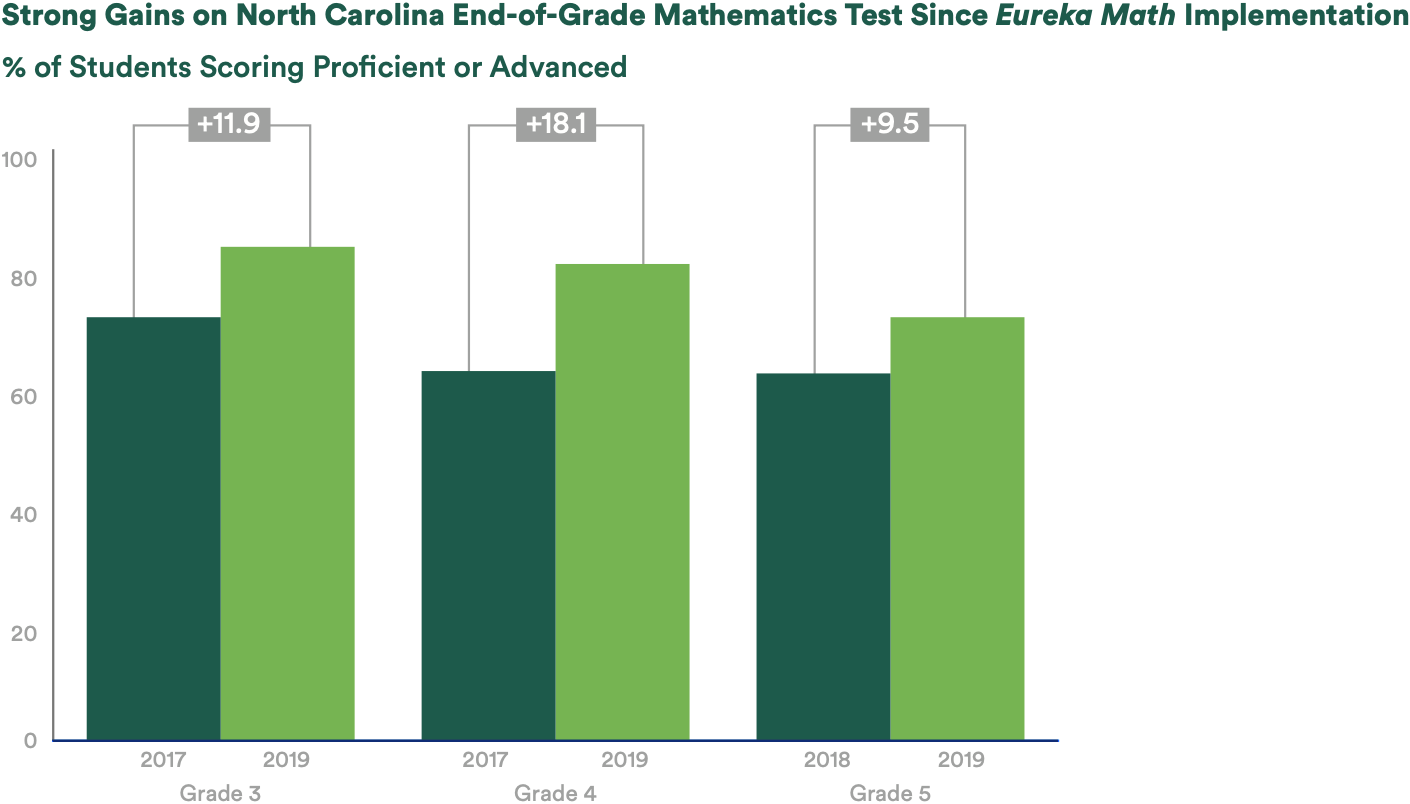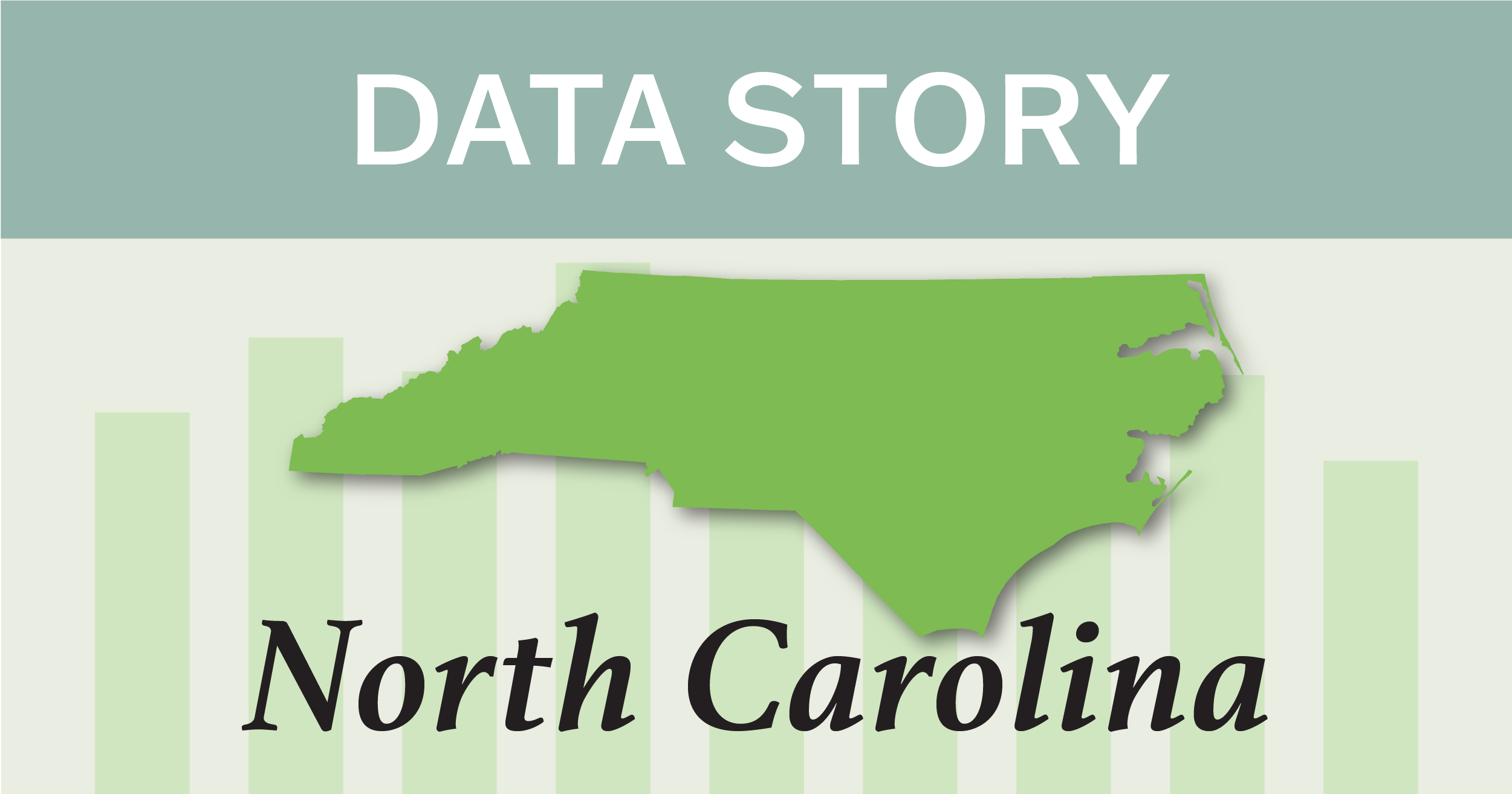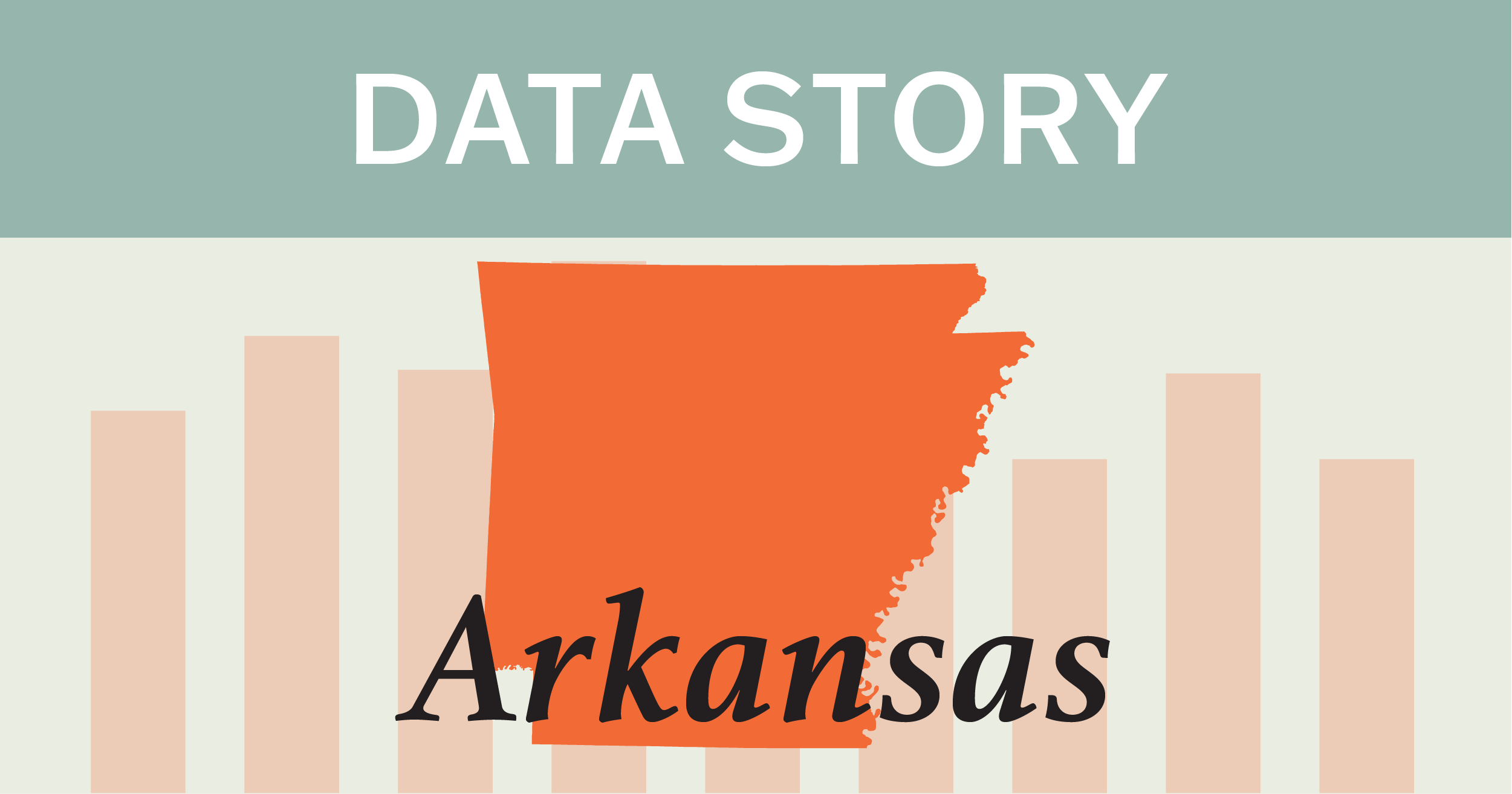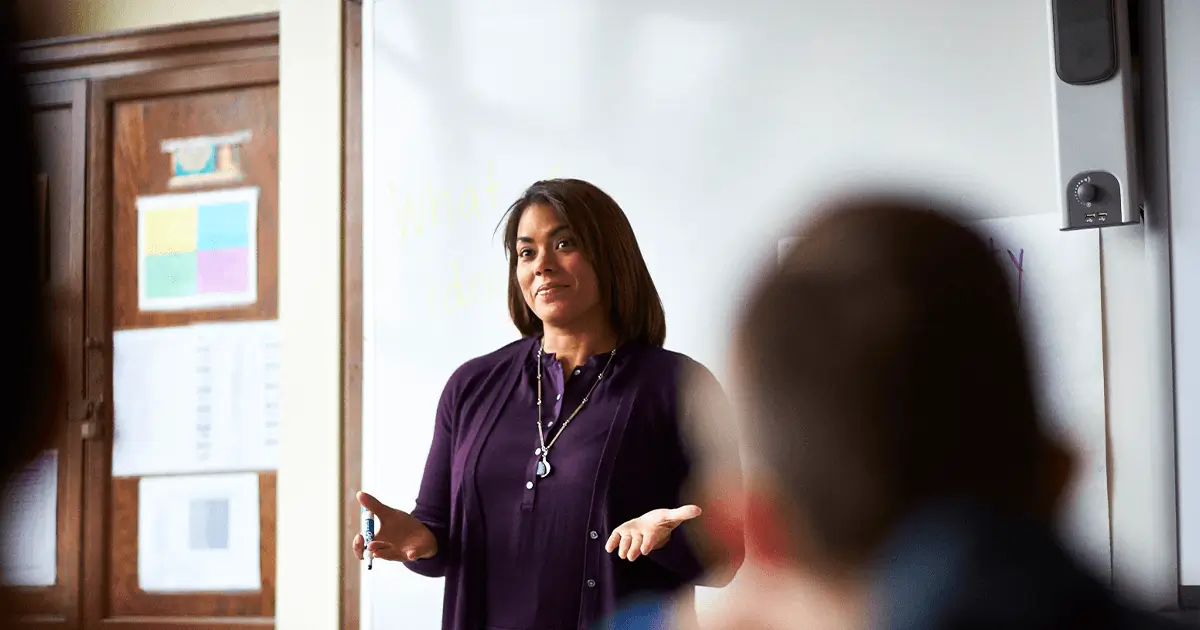Posted in: Aha! Blog > Eureka Math Blog > Student Engagement Data Stories Student Achievement > Math Scores Up at East Wake Academy after Eureka Math® Adoption
When Virginia Jacobs, a principal of the East Wake Academy public charter school in North Carolina’s Research Triangle area, walks into a math classroom these days, she loves what she sees.
“I see a huge focus on fluency first and foremost, and that is something that was an issue for us in the past,” Jacobs says. “I see students fully engaged in their math classes and lessons. They are curious about what they’re being shown and taught and sharing with one another.”
SCHOOL PROFILE
K–12 1,500 studentsAdopted Eureka Math
• Grades 3–4: 2016–2017
• Grade 5: 2017–2018
The K–12 school began phasing in Eureka Math®, the innovative math program from the curriculum developer Great Minds®, in the elementary grades in the 2016–2017 academic year. Proficiency rates on the North Carolina end-of-year math assessment have been increasing ever since.
-
Between spring 2017 and spring 2019, the percentage of Grade 3 students scoring proficient or advanced on the test increased 11.9 points.
-
In the same period, Grade 4 students had even greater gains, with scores up 18.1 percent.
-
Grade 5 students, who began using Eureka Math in 2017–2018, saw a 9.5 point year-to-year jump on their state test scores this spring.

Grade 3 teacher Tammy Heuts says the school community rose to and is benefiting from Eureka Math’s high expectations. She notes that the curriculum is very different from those the school has used in the past. “It has a level of rigor that we were missing before,” she says.
Heuts adds that although Eureka Math holds students to high standards, it has a lot of built-in support and scaffolding. As an example, she cites the way key topics come back around during a school year and across grades, allowing students to revisit them again and again.
“The spiraling that Eureka Math offers is so helpful. If you trust the cycle and stick with it, the curriculum does go back and hits those key areas,” she says, offering the concepts of rounding and regrouping and subtracting as examples.
Heuts also says the curriculum’s emphasis on teaching students multiple methods for solving problems has been extremely helpful.
“Now, students have more problem-solving skills in their toolbox,” she says. “They have the tape diagram, Read– Draw–Write, and other strategies. They are also much better today at explaining their answers. They are excellent math talkers. They understand the ‘why.’”
MORE CONCEPTUAL UNDERSTANDING AND STUDENT TALK
Although students don’t take the state test in the early elementary grades, Jacobs says school-based assessments and observations indicate that K–2 students are also benefiting from Eureka Math. And Jacobs says she agrees with Heuts that the curriculum has helped deepen all students’ understanding of math.
“Being a former math teacher, I’m all about conceptual understanding. Students in the past weren’t truly understanding what they were doing,” she says.
In all grades, Jacobs says, math classes at East Wake are noisier than ever, with students discussing content in the curriculum and collaborating on assignments.
“It’s a good thing,” she says. “If the class is quiet, I think either something is wrong or they’re taking a test.”
Getting parents on board with Eureka Math’s unique approach to instruction was challenging, Jacobs says. But many are coming around now that they see the students succeeding.
So what advice would Jacobs give to other schools just getting started with Eureka Math?
“My major advice is to get Great Minds training,” she says. Professional development sessions such as Solving Word Problems, Understanding the Major Work of the Grade Band, and more help teachers get a handle on Eureka Math’s novel instruction methods by explaining the rationale behind the curriculum’s approach.
“The more support for teachers, the better. A lot of us weren’t taught math this way, and we haven’t been teaching this way,” Jacobs says, adding that she is glad today’s students are benefiting from a better instructional approach—one that will prepare them for long-term success inside and outside the math classroom.
Submit the Form to Print

Jenny Taylor
Jenny has over a decade of experience in education policy and research. She has worked with states and districts on the development and implementation of college and career readiness policies, especially around the implementation of rigorous standards and high-quality instructional materials. She has extensive knowledge about K–12 standards, graduation requirements, assessments, and accountability systems nationwide. Additionally, she has conducted research for school districts to address pressing needs in those districts. Jenny received her B.A. in English and education from Bucknell University and her M.Ed. in education policy from the University of Pennsylvania Graduate School of Education.












